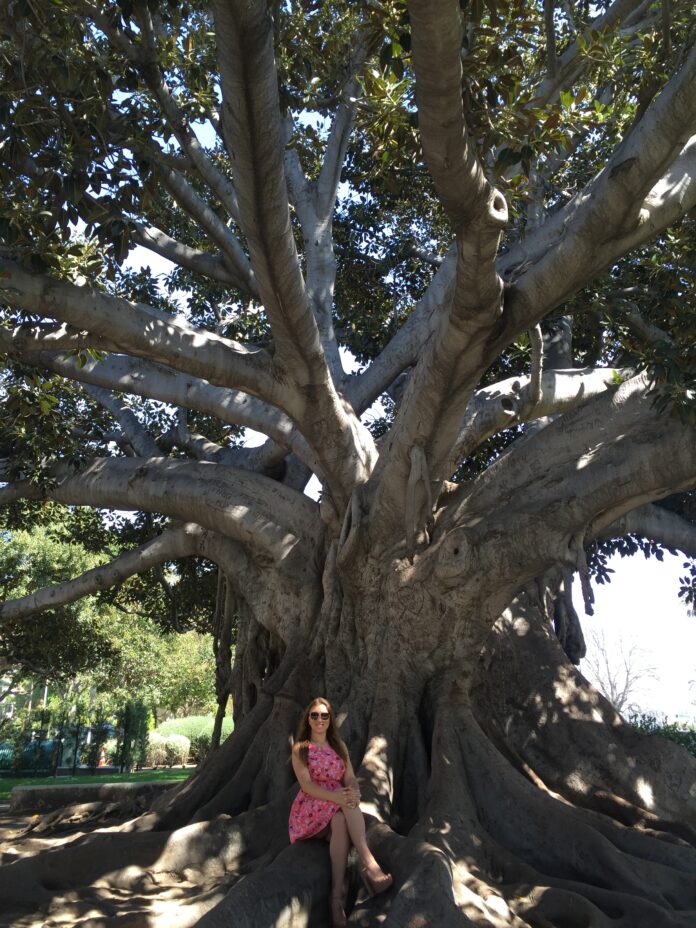In the novel “Children of Captain Grant” by the famous French writer and fantasist Jules Verne, there is a scene where the travelers, escaping from flooding in the pampas of South America, take refuge in the branches of a huge Ombu tree (known as Umbu to the locals).
The second name of this tree is Phytolacca dioica, and it indeed grows in South America. Now, thanks to civilization development, it can be found in California and South Africa as well. The Ombu tree can reach a height of 16 meters, which is the height of a five-story building. It has a dense canopy that can spread up to 15 meters in width and a thick trunk. The massive root system of the plant gives it stability against the most powerful cataclysms. Moreover, the roots rise above the ground, forming whimsical natural benches in some places.
Botanists suggest considering the Ombu not as a tree but as a tree-like plant since it lacks annual rings on the cross-section, typical of wood, and does not have a single trunk. It most closely resembles a huge shrub. The branches of the tree-shrub are hollow and filled with a soft spongy mass, consisting of 80% water. They can be easily cut with a knife.
Interestingly, the sap of the tree is poisonous. Of course, not as poisonous as the most dangerous tree in the world – the Manchineel, but still, its leaves are not eaten by anyone, not even parasites or locusts. A decoction of Ombu leaves is used as a laxative.
Due to its high water content, the green tree does not burn, but the dry one ignites like a match and burns instantly, giving off no heat. Therefore, Glenarvan and his friends would hardly be able to build a stable fire on the Ombu.
As mentioned earlier, insects avoid the tree, so it is pollinated by the wind. Ombu trees prefer seclusion, so the nearest tree grows very far away, which further complicates the pollination process.
Among South Americans, the Ombu tree is considered sacred and even immortal because throughout the entire history of modern science, scientists have never been able to record a single instance of natural death of the Ombu. It is not afraid of floods, hurricanes, or fires. Moreover, if the trunk of the tree is cut down, it begins to grow again.
Here’s some interesting facts:
Ombu trees are often used as landmarks due to their large size and distinctive appearance, making them important reference points for travelers and locals alike.
Despite its impressive size, the Ombu tree has a relatively shallow root system, which extends horizontally near the surface rather than deep into the ground. This adaptation helps the tree access water and nutrients more efficiently in the often dry and arid environments where it grows.
The Ombu tree is also known for its resilience to drought conditions. Its ability to store water in its tissues allows it to survive extended periods of dry weather without suffering significant damage.
In addition to its ecological importance, the Ombu tree has cultural significance in South American folklore and traditions. It is often associated with myths and legends, and its presence in the landscape has inspired artists, writers, and poets throughout history.
Ombu trees are sometimes used as natural shelters by animals such as birds, reptiles, and small mammals. The dense foliage and sturdy branches provide protection from predators and the elements, making them valuable habitats in their ecosystems.
The wood of the Ombu tree is not commonly used for construction or woodworking due to its soft and spongy texture. However, it has been historically utilized for making traditional crafts, such as carvings and sculptures, by indigenous peoples in South America.
